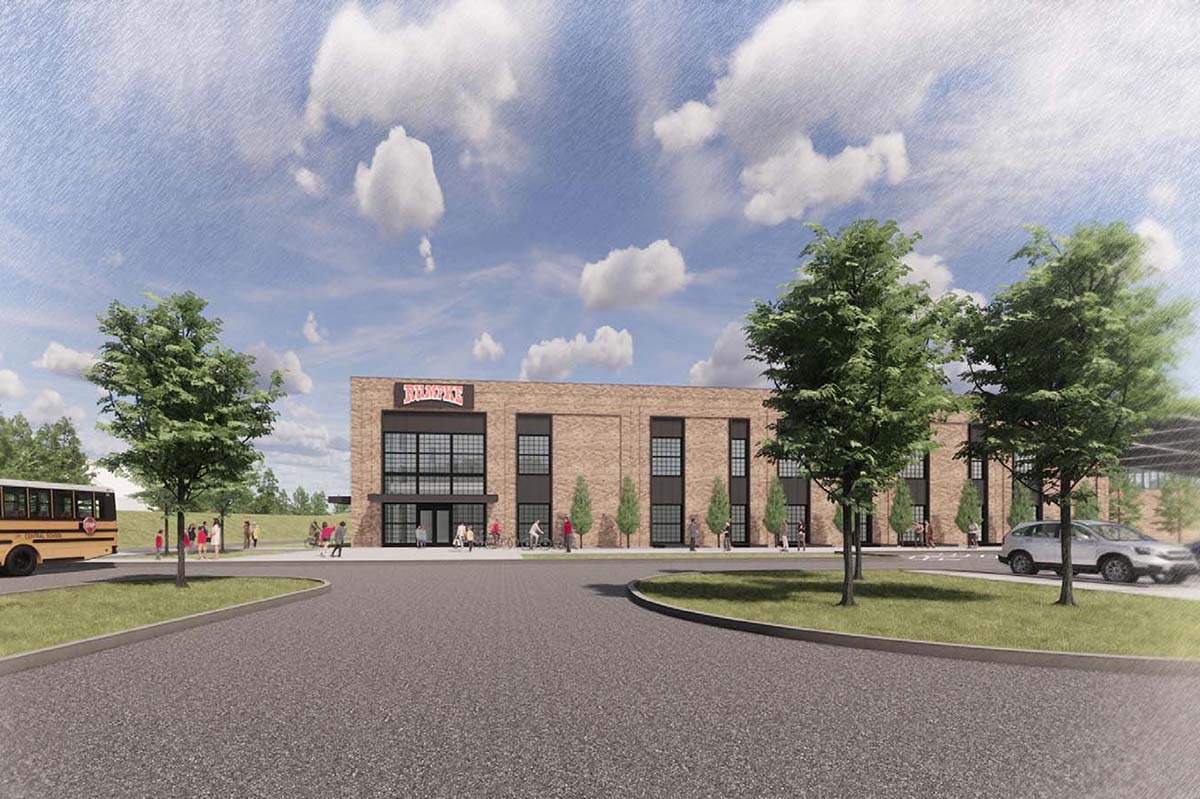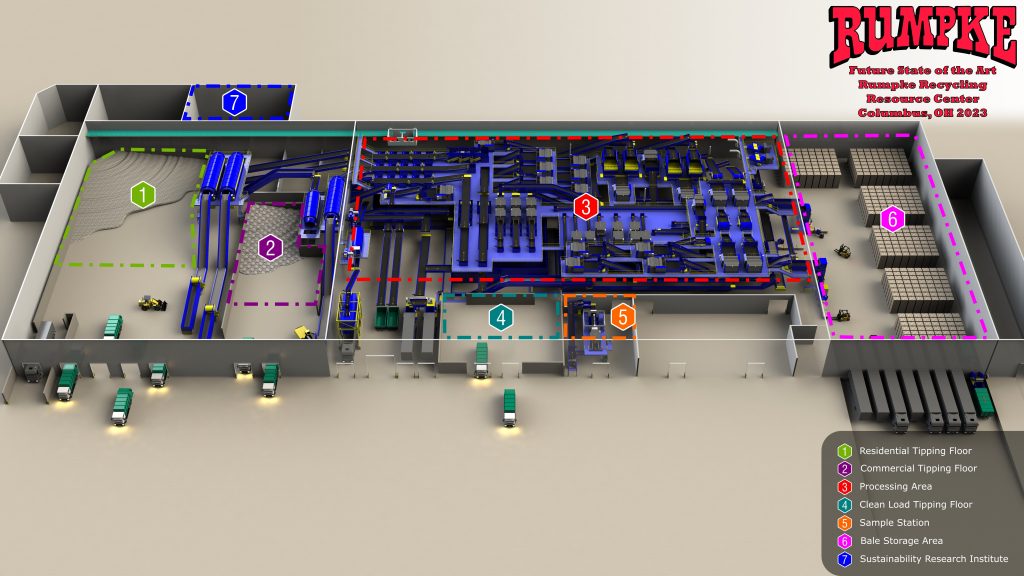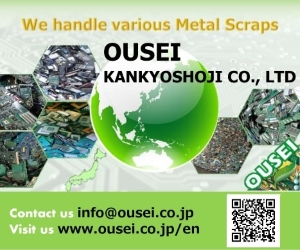
Set to open in 2024, Rumpke’s 200,000-square-foot MRF will be built on 25 acres the company purchased almost a decade ago. | Courtesy of Rumpke
Rumpke Waste and Recycling’s new $50 million MRF is designed to adapt, with plans for the Columbus, Ohio facility drawn up to take future changes to the recycling stream into account.
“We’re not designing for two years from now, we’re not designing for three years from now, but for 20 years from now,” Jeffrey Snyder, Rumpke’s director of recycling, said in an interview with Resource Recycling.
The 200,000-square-foot facility will be built on 25 acres the company purchased almost a decade ago on Joyce Avenue in Columbus with growth in mind. About a mile and a half away from a current Rumpke facility on Fifth Avenue, the Rumpke Recycling Resource Center will open in 2024, according to Snyder.
Snyder said the current facility is located downtown and not only houses a MRF that processes 13,000 tons per month, but over 200 residential collection trucks, a transfer facility and the maintenance garage.
“If you come to our facility at 7 a.m., it’s organized chaos. With all trucks getting on the road, all the employees coming in, there’s just a lot going on,” Snyder said. “So what a great opportunity to be able to take advantage of what we did nine years ago and use the 25 acres on Joyce Avenue.”
The new facility will allow Rumpke to process 50 tons per hour instead of the current 30-45 tons, Snyder said. It will also allow the company to adapt more readily to the changing recycling stream and “start to recover more of the recyclables that we think we can do in the future.”
“Recycling is changing in a positive way to be able to accept more products,” Snyder said, pointing to polypropylene, pizza boxes and other materials that years ago were not considered recyclable.
With the new facility, Snyder said Rumpke will start segregating PET substrates, including by color, prior to baling them.
The new MRF will have additional focuses on research, career development and education. In partnership with Ohio State University, the facility will contain a Sustainability Institute where Ohio State students and researchers can be “on site every single day doing research projects,” Snyder said.
There will be a career development, recruiting and training center, and a community meeting space. Additionally, in partnership with the Center of Science and Industry (COSI), the facility will have a public education center to provide “hands on, really elaborate” explanations of the recycling process from the time people buy a product to the time it gets made into a new product, Snyder said.
Even the outside of the building will provide some lessons, Snyder said, as it’s “not going to look like MRF when you drive up to it.”
“It will be beautiful and we’re going to have environmental things, whether it’s solar power or maybe a living green roof, we’ll have some environmental touches to the facility to really help people understand what ‘closing the loop’ and all the buzzwords out there mean,” he said.
Once the MRF opens, the older facility on Fifth Avenue will close and the space will be used for more truck parking, Snyder said. The old MRF equipment will be scrapped and recycled.
Technology enables expanded ‘accepted’ list
While the new MRF will let Rumpke expand what it can handle, Snyder said the company isn’t waiting around for construction to start. In January 2021, Rumpke started accepting plastic tubs, and this February also took on plastic, paper and aluminum cups.
Many paper mills that consume mixed paper signed off on accepting paper cups in mixed paper in the past year, Snyder said, including the mills Rumpke contracts with.
Rumpke is also improving sorting technology at a MRF it owns in Cincinnati. A $1.6 million project in June to add three SamurAI robots from Machinex to the Cincinnati facility’s last-chance line, hitting on PP, helped the expansion of the accepted materials list. A $775,000 grant from The Recycling Partnership helped offset the cost, Snyder said. Since then, two more robots have been added to the Cincinnati facility.
Meanwhile, at the downtown Columbus facility, an optical sorter was reprogrammed to handle the tubs and now the cups.
Rumpke hasn’t seen a huge change in the volume of material entering the MRFs with the additions, Snyder said. The changes will require a “mindset change” from the public, he noted. Paper cups from fast food restaurants normally get put in a trash can immediately, but now “we need to save that stuff and get it to the right bin so it can be recovered.”
Rumpke is also looking to boost recovery rates by adding more technology to the last-chance line and making upstream processing more efficient.
“In every MRF in the country that I’ve been to, and I’ve been to a lot, there are a lot of recyclables that get out the end of the line. There’s things that are missed,” Snyder said. “In the new MRF, we’re not going to miss those things.”
The key to all of the growth Rumpke wants to see is technology, Snyder said, and it’s already out there.
“We want to continue to be on that cutting edge. We want to be on the forefront and be the first to the table in the Midwest when it comes to recycling,” he said. “We feel we are the experts at it. We feel that we have the infrastructure to be able to handle all that. The future is having the technology to be able to do the things we need to do inside the MRFs.”
More stories about MRFs
- Weak bale pricing compounds hauler headwinds
- CurbWaste targets growth amid multi-million funding round
- New MRF guide aims to boost infrastructure




